Home > sightseeningList > Notre Dame de Paris
Home > sightseeningList > Notre Dame de Paris
Area:Île de la Cité/Saint-Louis Genre: World Culture Heritage Churches Museums
Character: Recommended Place For Couples For those travel alone for Middle-aged Couple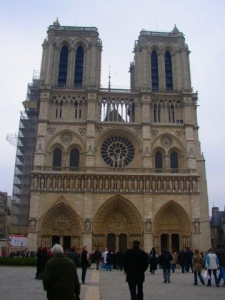
Notre-Dame de Paris also known as Notre-Dame Cathedral or simply Notre-Dame, is a historic Catholic cathedral on the eastern half of the Île de la Cité in the fourth arrondissement of Paris, France. The cathedral is widely considered to be one of the finest examples of French Gothic architecture and among the largest and most well-known church buildings in the world. The naturalism of its sculptures and stained glass are in contrast with earlier Romanesque architecture.
■Access:METRO Ligne 4 Station Cité or Saint-Michel
■Address:6 Parvis Notre-Dame, Place Jean-Paul II, 75004 Paris, France
■Tell:01 42 34 56 10
■Opening Hours:The cathedral is open every day of the year from 8:00 am to 6:45 pm (7:15 pm on Saturdays and Sundays).
■Closed:Open all year round
■Admission:Cathedral free, towers €8.50, crypt €5, treasury €3
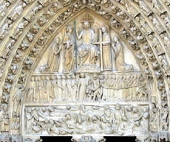
The Portal of the Last Judgement is the west façade’s central portal, which was built in the 1220s-1230s, just after the façade’s other two portals. It represents the Last Judgement as described in the Gospel of Saint Matthew.
The angels left and right are holding the Cross, the nails and the lance. Either side of Christ, Mary and John are praying for the sinners. On the archivolts are shown a large and diverse number of male and female saints. It is therefore under the gaze of the mercy and communion of the saints that the dead rise (lower register) and split into two separate groups (upper register). There is a noticeable difference in the shade of the stone and in the quality of the sculptures between the edges and the centre.
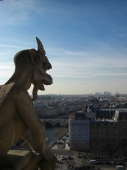
In architecture, a gargoyle is a carved stone grotesque with a spout designed to convey water from a roof and away from the side of a building, thereby preventing rainwater from running down masonry walls and eroding the mortar between. Architects often used multiple gargoyles on buildings to divide the flow of rainwater off the roof to minimize the potential damage from a rainstorm. A trough is cut in the back of the gargoyle and rainwater typically exits through the open mouth. Gargoyles are usually an elongated fantastic animal because the length of the gargoyle determines how far water is thrown from the wall. When Gothic flying buttresses were used, aqueducts were sometimes cut into the buttress to divert water over the aisle walls.
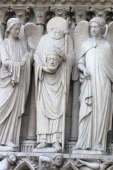
Saint Denis came from Lyon’s Christian community and was sent to Paris to found the Church there in the 3rd century. He would become its first bishop.
In the year 257, he was decapitated in Montmartre with his companions after they were discovered by a Roman governor. He then got up, walked six kilometres with his head in his hands, and gave his head to a Christian woman before collapsing on the ground. It is on this site that the Basilique de Saint-Denis was built in honour of the bishop.
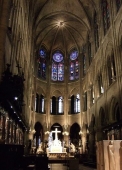
It is said that a long-awaited son was given to King Louis XIII, in thanks for the king's consecration of France to the Virgin Mary. This son, who was to become Louis XIV, was born in 1638, the year of the kingdom's consecration.

The bells, which are amongst the oldest sound instruments, have always been associated with Christianity from the first centuries when its influence began to spread, “proclaiming God to the horizon” (Charles Péguy). While marking out the passage of time since the Middle Ages, their primary function is liturgical: With their ringing and chiming they call the faithful to come together and pray, combining their song with the joy and suffering of the Christian community, and, just as importantly at Notre-Dame de Paris, with the key moments in the history of France.
Don’t miss this rare opportunity to experience the towers of Paris’ famous Notre-Dame Cathedral after hours. When the daytime crowds dissipate and the towers close to the general public, it’s your chance to discover the history and legends of the iconic Towers of Notre-Dame with an expert guide. Learn about the masterful Gothic architecture as you tour the forecourt, and then climb up the towers for beautiful panoramic views of Paris.
・From USD $48.68 (per person)
Near